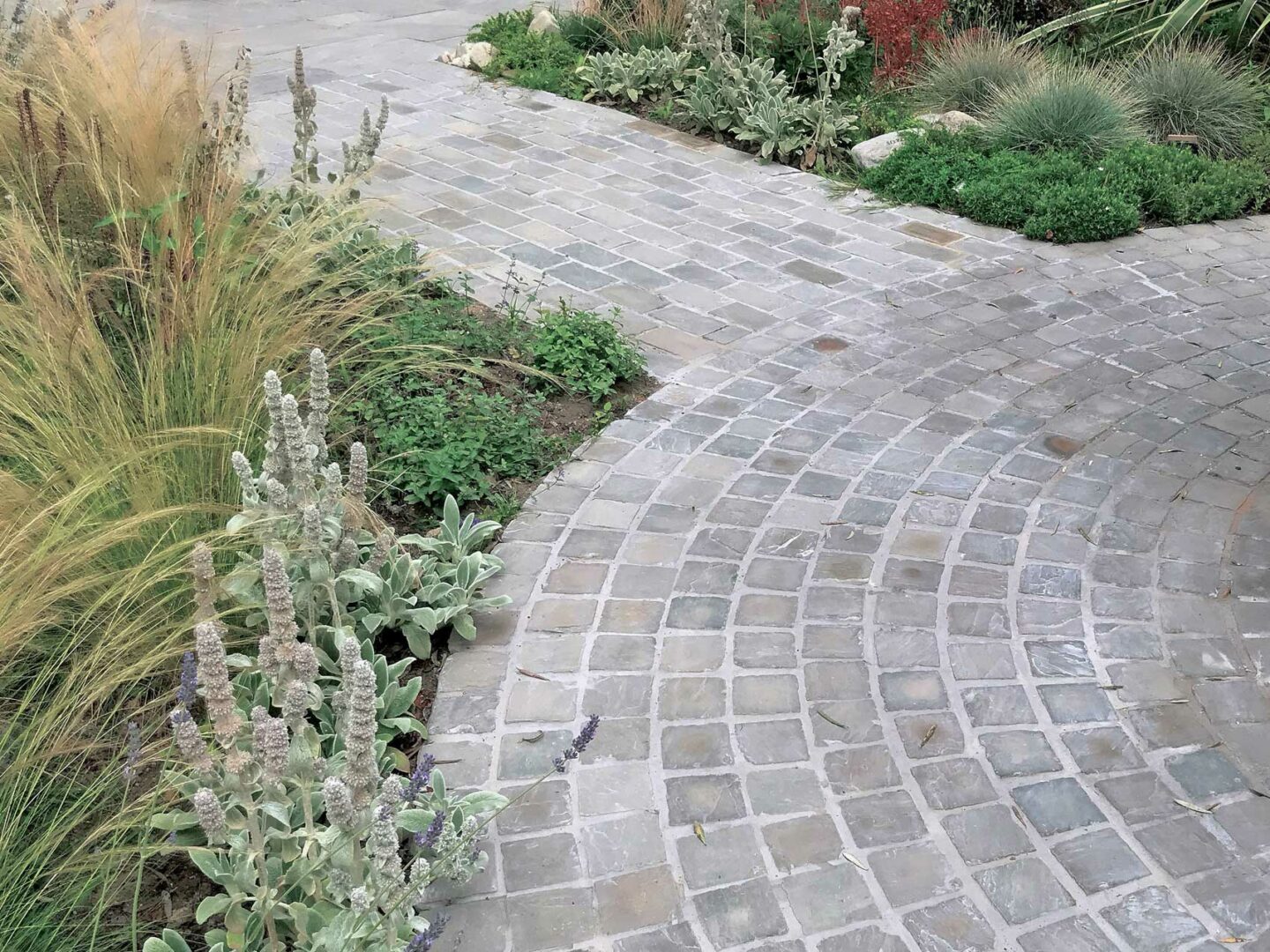Share
17 May 2020
Design with cobblestone setts
Design with cobblestone setts. Throughout the ages cobblestone setts have been used as a paving material. They have been used to pave cobble streets of many medieval towns across Europe. Today, cobblestone setts are a popular material choice for landscape gardeners. They are very versatile and provide great options for imaginative garden patio or pathway designs. Available in sandstone, limestone and granite. Each material type offering a different colour and texture. Sizes of the cobblestone setts are typically 100mm x 100mm, or 200mm x 100mm.
Here are 5 ways to design with cobblestone setts in your garden:
1. Pathways- create winding pathways using 100 x 100 setts. Layout in rows either with the joints meeting or staggering the bonds so you get a random effect. For a metre wide path you need nine setts per row and nine rows to cover a metre length, assuming the setts are spaced 10mm apart.
2. Driveway edging- use either 100 x 100 or 200 x 100 setts to create an edging for your gravel drive. Typically two to four rows are laid for the driveway entrance with a single row of setts along the outer driveway border.
3. Pathway edging- similar to the driveway edging, use a single or double row of setts to edge a gravel or paved pathway.
4. Patio designs- incorporate setts into your patio design. Can be used as a border edging and/or blocks of setts in place of a paving slab. Mix and match material and colour types. For example to create a contrast you could add black limestone setts as a border to Old mill flagstone paving. Or sandstone setts mixed with Yorkstone paving.
5. Patio circles- cobblestone setts can be laid out in a concentric pattern creating a patio circle, up to any size you desire. Can be part of a formal pattern design with four paths leading away from a centre patio circle.

